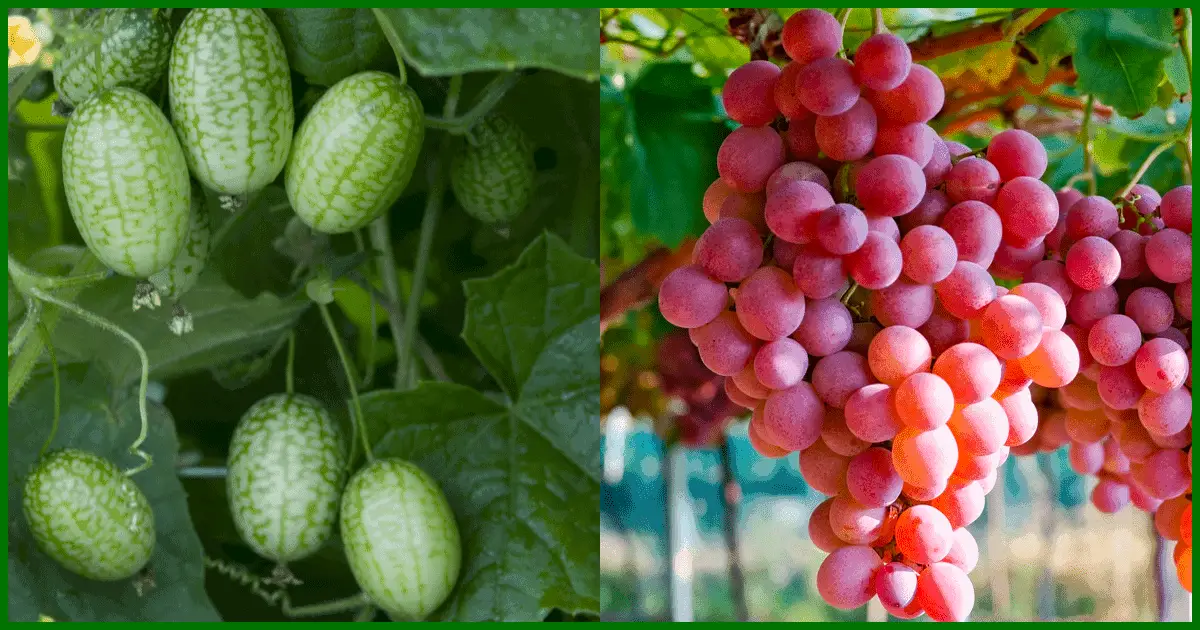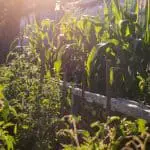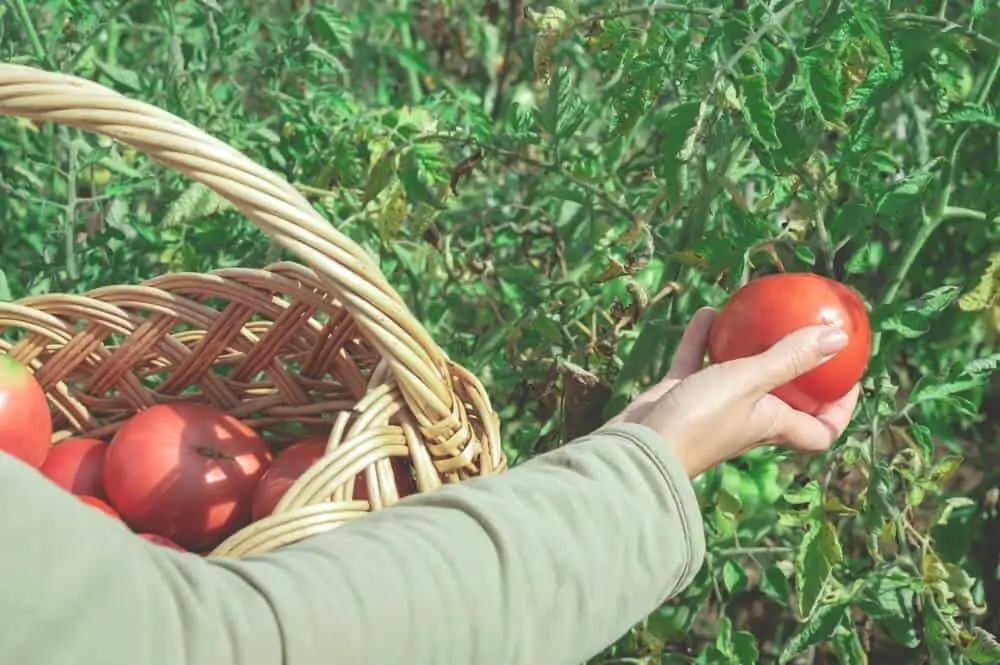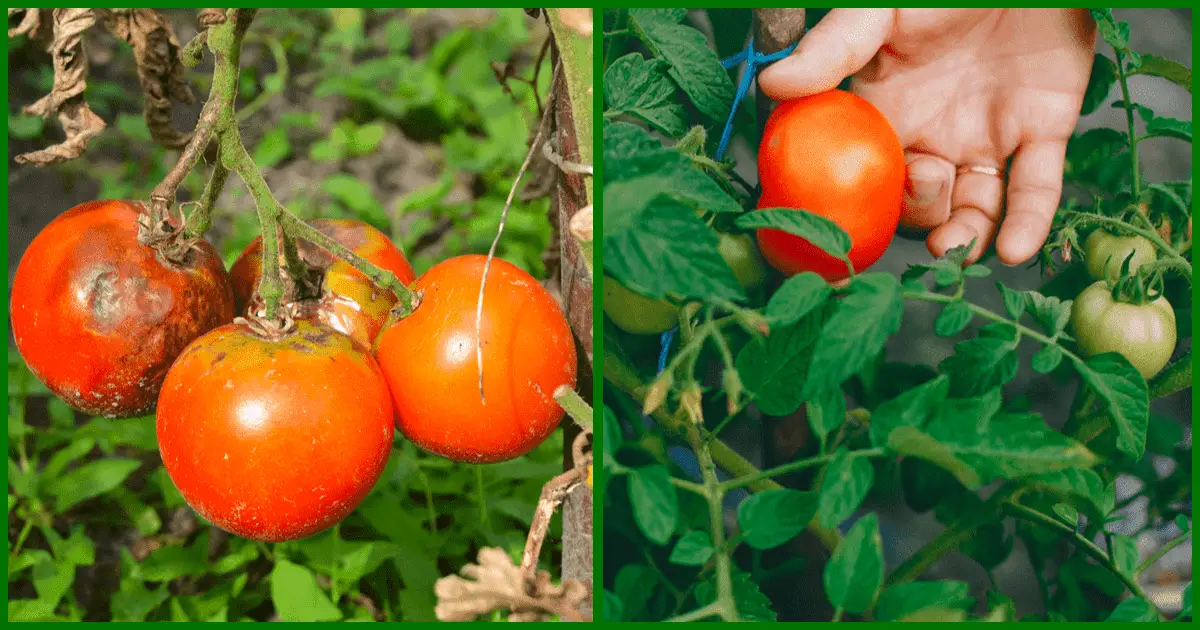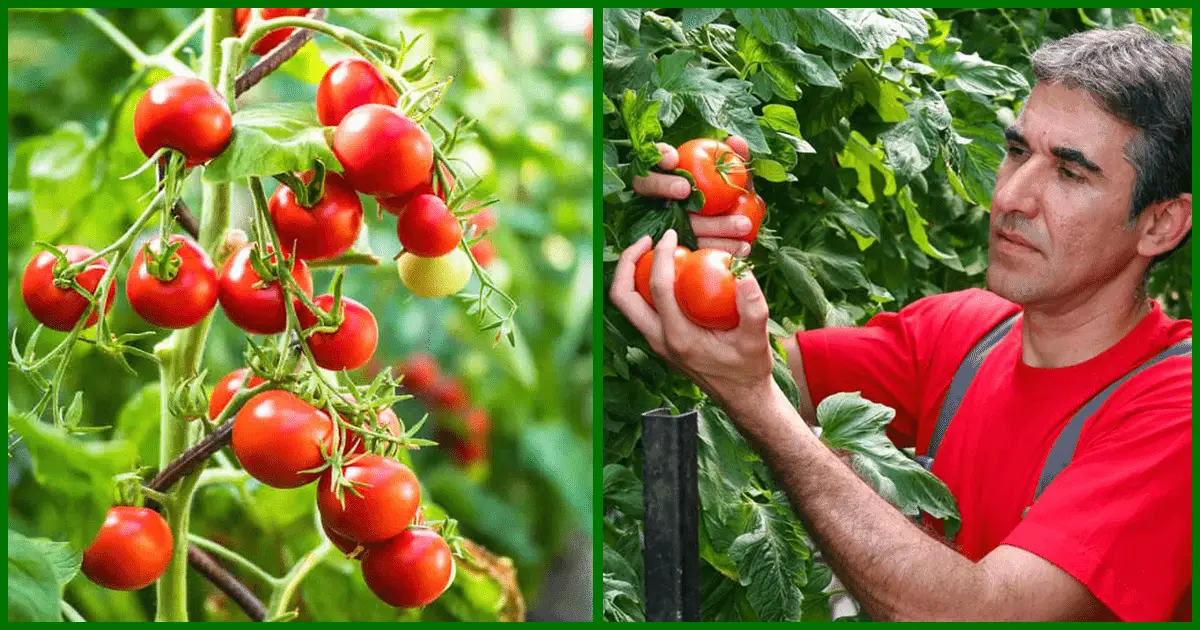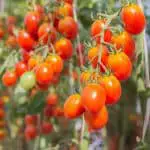Add tomato cages to your shopping list if you’re just getting started in the garden this year.
Providing support and structure to your climbing tomatoes, they offer the perfect solution for healthier plants and a tidier veg patch tidy. You’re also more like to reap the reward of a better crop.
However, the best thing about tomato cages is that they’re not just for tomatoes; many plants need support to grow, and this metal structure is ideal.
So, if you’re looking for other ways to use them, here are the top 9 plants to grow in tomato cages that aren’t tomatoes.
1. Peas
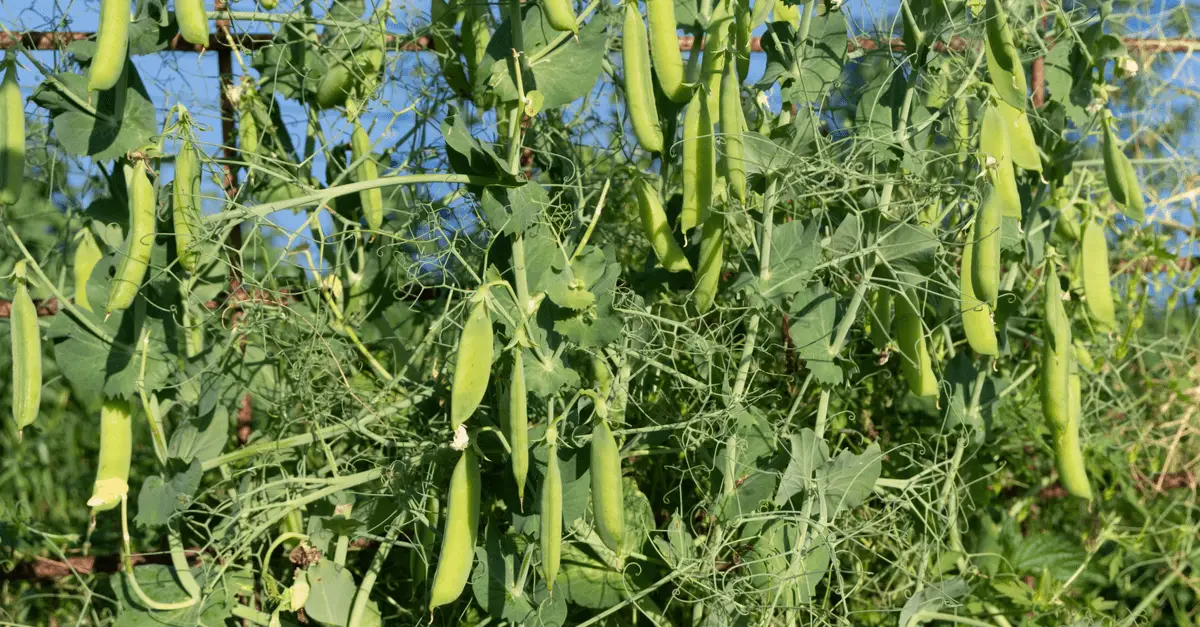
We’ll start with the classic and humble pea. There are so many delights to this simple vegetable you shouldn’t overlook them.
First off, they’re one of the easier vegetables to grow. They don’t require much fertilizer and prefer slightly cooler temperatures; you’re almost guaranteed an excellent yield.
Although their shoots are relatively delicate, peas are equipped with perfect tendrils to hold on tight and benefit from a growing cage. Solid support will also keep your peas off the soil and help to prevent them from rotting.
They’re also incredibly quick-growing. Before you know it, visiting bees will buzz around the dainty blooms, soon followed by the fresh green pods, providing a cozy bed for the main event.
Depending on the type of pea you choose to grow, you can either pop open the pods to enjoy the sweet treat inside, or with varieties such as sugar snap peas; you can eat the whole lot.
2. Cucumber
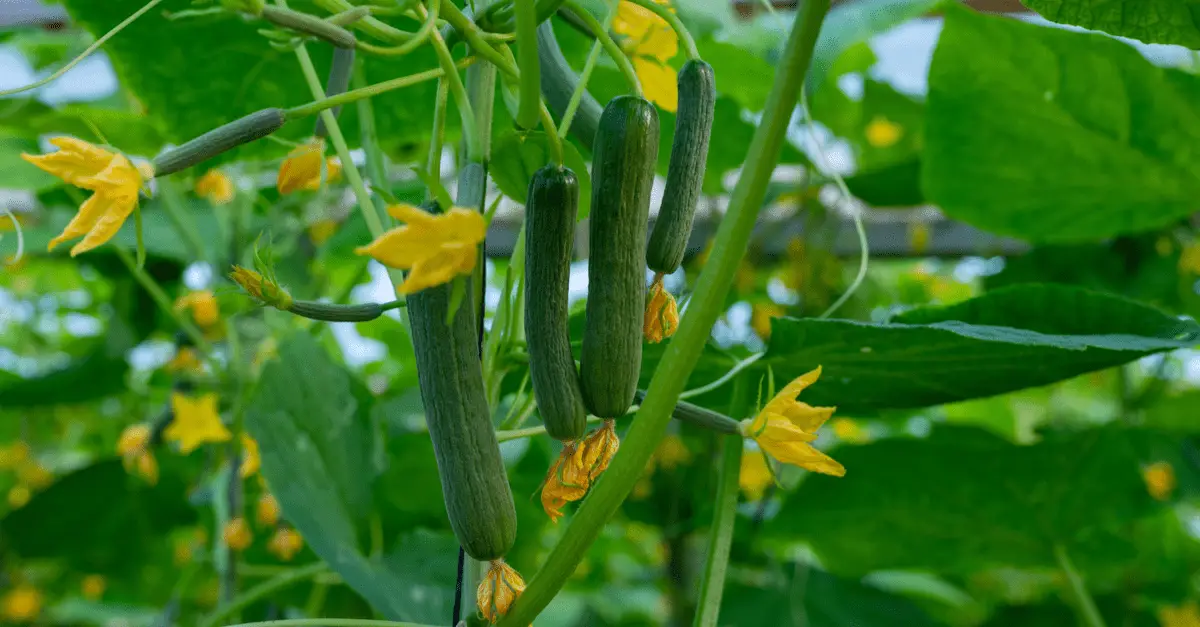
Nothing beats a freshly grown cucumber’s juicy and refreshing taste on a hot day.
Preferring warmer climates, this staple to any salad is not difficult to grow, as long as you keep to the conditions it likes. Most notably, avoiding frost.
When cucumber plants grow well, they grow big and are generally suited to bigger gardens, although small spaces are not out of the question, and they can be very content inside a greenhouse.
Because cucumbers roots reach depths of up to 48 inches, it’s essential to plant them somewhere that isn’t restricting, so pots aren’t an option.
Use supports such as a tomato cage to allow the plant to grow upwards and away from the soil.
3. Mouse Watermelons
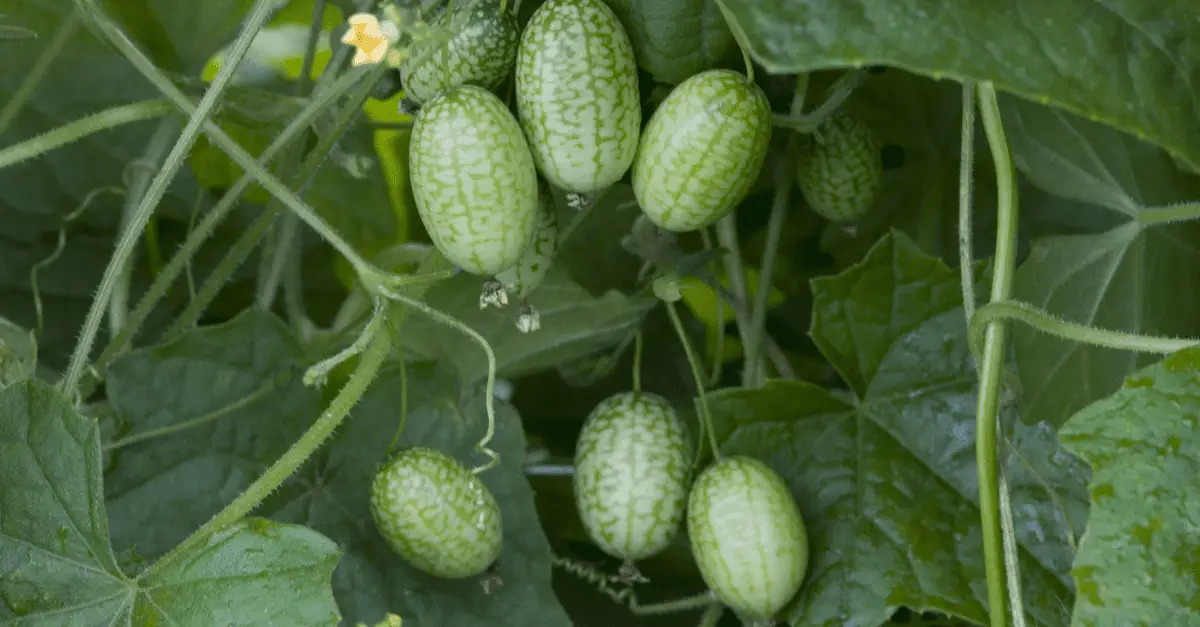
The Mouse Watermelon could be the cutest fruit you’ve ever seen.
This unusual little pleasure has the distinct oval and mottled green appearance of a watermelon, yet it is a fraction of the size. A member of the cucumber family, its taste suggests such. Also known as the cucamelon, they are a refreshing bite-sized delight.
Needing regular temperatures between 71-75 degrees Fahrenheit to germinate, this plant does not suit cooler climates.
But, if your environment meets this perennial’s needs, use the tomato cage for support, and watch the speed at which the plant grows and bears fruit. You’ll not be disappointed.
4. Squash
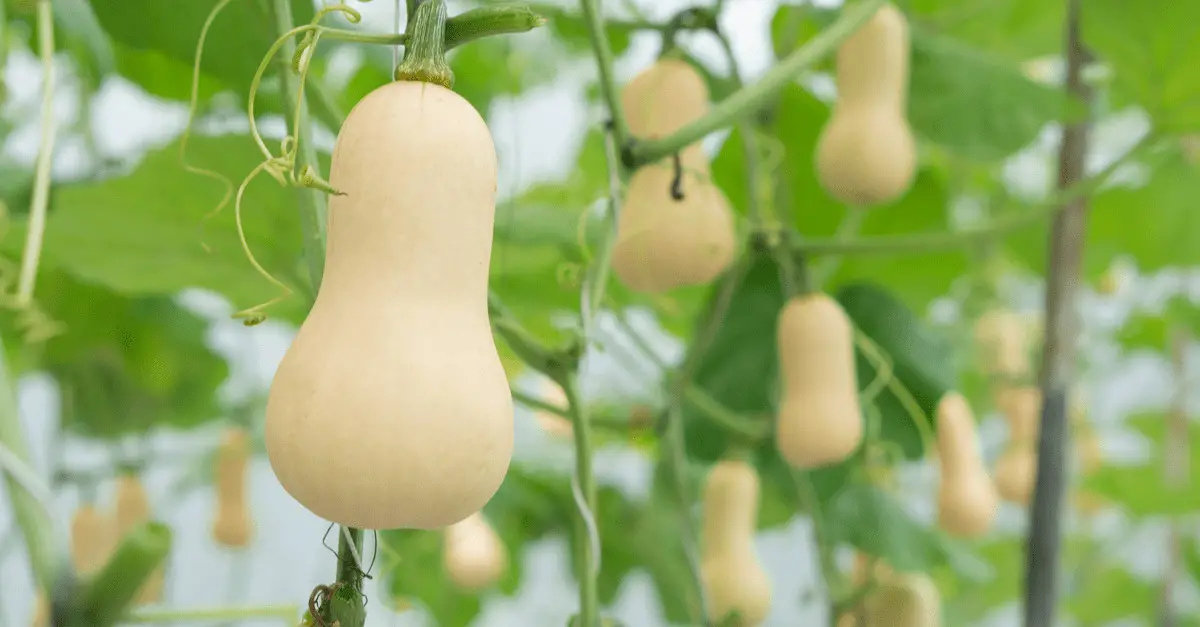
Plants in the squash family, such as pumpkins and butternut squash, will naturally grow on the ground.
Growing squash plants on soil can often fall victim to rot, and slugs often see them as their delicious treat. However, by providing support and training them to climb, you’ll save space and enjoy a healthier and more abundant harvest.
Once your shoots are big enough to grow leaves, begin removing the lowest, and make sure to tie your stem to the support.
Because squash plant does not have tendrils, you’ll need to continue helping them as they grow, and due to their weight, larger squash fruits may also need support.
5. Grapes
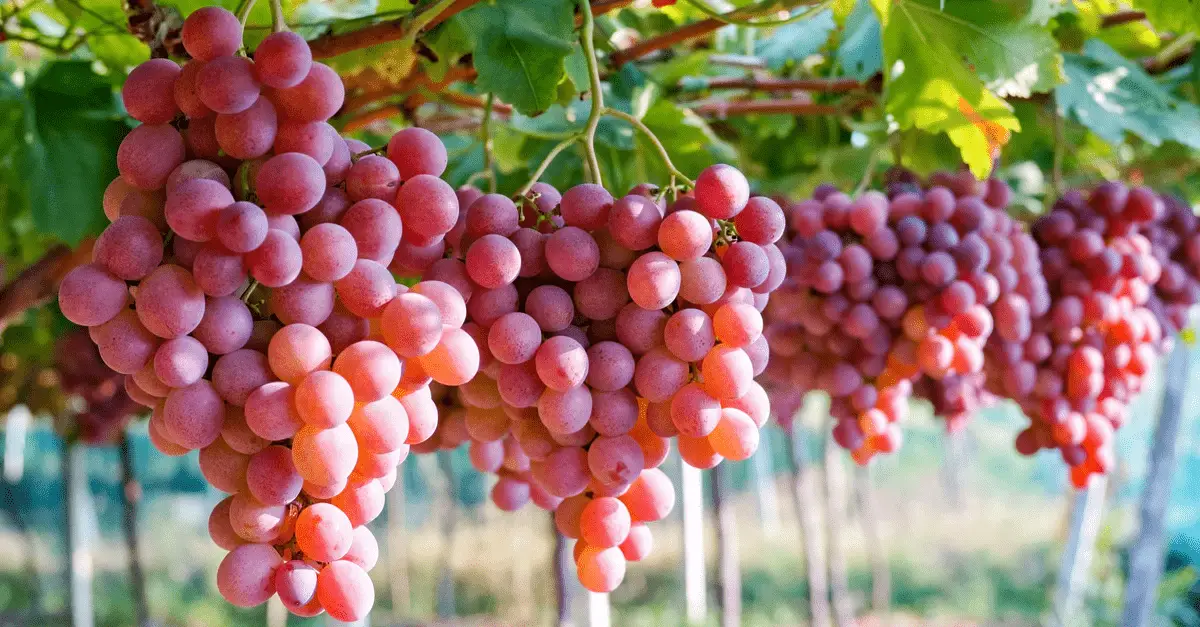
Whether you’re growing grapes to make wine or growing them to feast upon, these jewels are well worth the effort, especially as they are relatively fuss-free.
If you have a smaller garden, grapes plants are perfectly happy in pots placed where they can soak up as much sun as possible, and if your climate isn’t the warmest, you can always grow them in a greenhouse.
One thing is for sure, though, grapes plants can grow to great sizes, and they need support.
Using a tomato cage will help give the vines the strength to wind their way toward the sun. It will also help support the plant fruit as it grows.
6. Blackberries
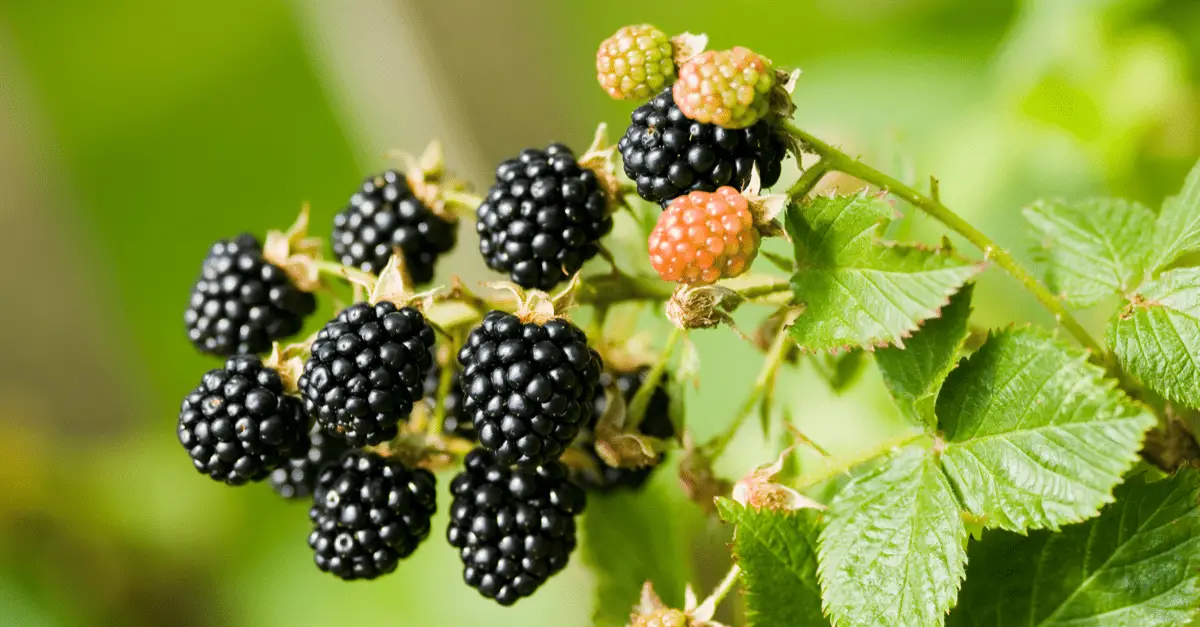
Beautiful blackberries. This rich, black and juicy berry will make your taste buds dance when perfectly ripe. Perfect for pies or jams and a great accompaniment to apples, blackberries are a versatile treat.
The best thing about blackberries is that you can find them in the wild. So if you know where to look, and when they’re ripening in your area, grab and container and make the most of nature’s gift—watching out, of course, for the sharp scratch of its thorn.
If you decide to grow blackberries in your garden, you can opt for thornless varieties, such as Loch Ness or Waldo, and using a tomato cage will help keep them from becoming unwieldy.
7. Passionfruit

Everything about the passionfruit is exotic; its smell, its appearance, and, of course, the way it tastes.
Surprisingly, it’s not particularly difficult to grow, with some varieties, such as the common passionflower, being hardy to lower temperatures. However, it is native to South America, so most types require a warm, sheltered spot to thrive.
Whether you’re thinking of growing this plant for its fruit or just for its sheer beauty, you won’t be disappointed. To make the most of it, using a support like a tomato cage will provide it with the strength to proudly show itself off.
The first shoots of your passionflower may need help, so attach it with twine; however, as the plant matures, it’ll use its tendrils to stay connected.
8. Climbing Nasturtium
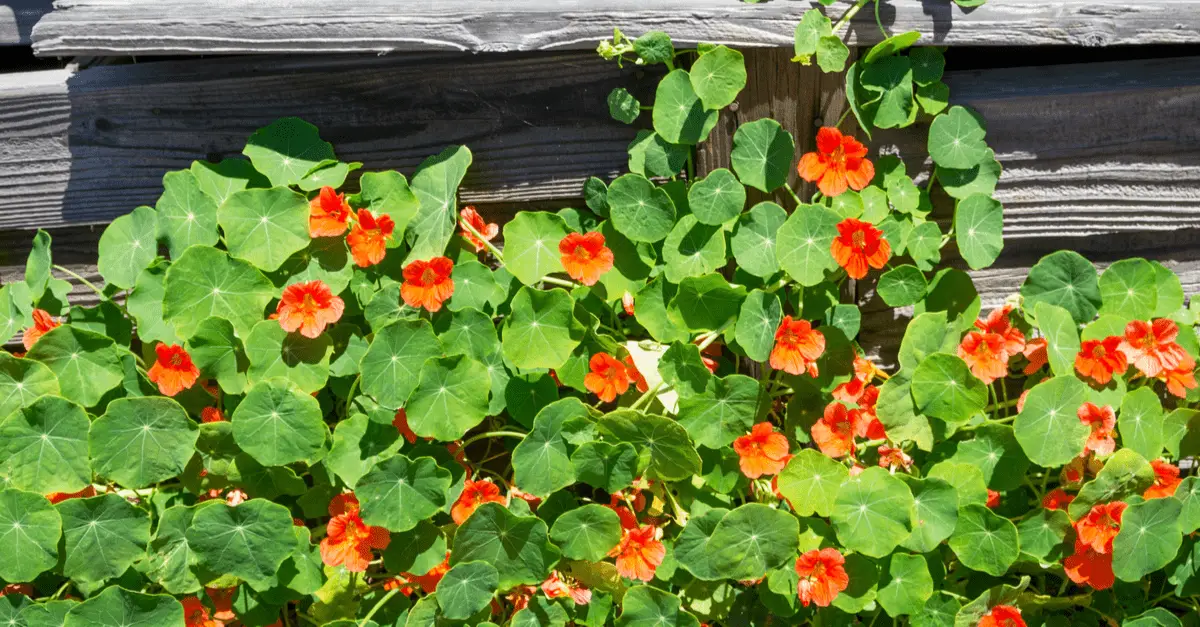
The Climbing Nasturtium is a no-fuss annual that requires very little attention but will give you so much. Plant this little beauty when the weather is well on its way to staying warm for the season and use a tomato cage to support its growth.
Perfect for containers or for planting directly into the soil, they don’t need much fertilizing or watering unless you experience a particularly lengthy dry spell and will not need pruning. As the temperature drops, they will begin to yellow and disperse their seeds, which lie in wait until the following year.
As well as being a bright and cheerful addition to your garden’s flower collection, they are also entirely edible. The leaves, you will find, have a sweeter taste, whereas the flowers and seeds have a spicy kick to them. Nasturtium is often added to salads and used in dips and sauces.
9. Canary-Bird Vine

If you want to try growing something less common, the Canary-Bird Vine or Canary Creeper could be your plant.
This is a rapid grower, and being native to South America requires a warmer climate to thrive. Because it is a vigorous grower, a tomato cage is perfect for supporting the plant while displaying delicate and attractive yellow blooms.
As with the Nasturtium, the Canary-Bird Vine is a straightforward plant to care for, requiring minimal intervention.
It is also completely edible, with a taste that errs towards the tangy, peppery side, making it the perfect addition to flavor Middle Eastern dishes.
The only downside to the Canary-Bird Vine is that it’s also very appealing to caterpillars, aphids, and other nibbling insects because it tastes so good.
